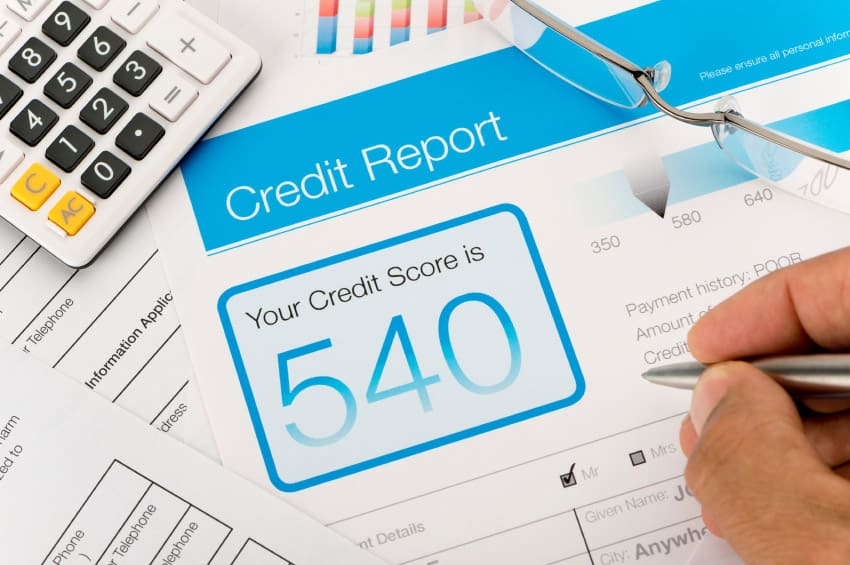Having a strong credit score can really come in handy if you need to borrow money. When you have bad credit, it can be challenging to get a personal loan — especially one with low interest rates and no fees. But some lenders do cater to borrowers with bad credit scores.
Here’s how to get a loan with bad credit and what you need to know about this specific type of credit product.
If you need a personal loan, visit Credible to see your prequalified rates from various lenders, all in one place.
1. Check your credit report and history
Before you apply for a bad credit loan, it’s a good idea to check both your credit report and credit history to see where you stand. Knowing your credit score can help you determine which types of loans you can qualify for, what lenders to apply with, and which ones to skip if you’re unlikely to meet their requirements.
Reviewing your credit report gives you the opportunity to spot any potential mistakes or fraud and report them to the credit bureau. If certain items on your credit report are found to be errors, the credit bureau can remove them from your report. This can usually improve your credit score, with little effort on your end. You can also review your report to see which areas you can improve so you can qualify for better lending products in the future.
The reason lenders like to see high credit scores is because a low credit score typically stems from negative marks on your credit report, such as making late payments or having debt in collections. A low credit score indicates to a lender that you’re more likely to miss your debt payments or default on the loan, which can be very costly for the lender.
2. Prequalify for a personal loan
When you apply for a personal loan, you trigger a hard inquiry on your credit report, which temporarily lowers your credit score. This is unavoidable if you want to get a personal loan, but you can avoid having a hard credit inquiry added to your report unnecessarily.
Before officially applying for a personal loan, prequalify with the lender to get an estimated loan offer. When you prequalify, the lender only runs a soft inquiry of your credit report. So if the lender tells you it won’t be likely to approve your loan application, or presents you with terms you know you won’t want to accept, you can skip applying officially with that lender.
Credible makes it easy to compare personal loan rates from various lenders, and it won’t affect your credit.
3. Compare bad credit loans
Before you prequalify, research which lenders accept your credit score so you don’t waste time and energy on lenders that won’t work with you.
Several lenders offer personal loans for borrowers with lower credit scores. These lenders often take other information into account when considering your application, such as your employment and income. While most lenders tend to require a score of at least 580, some lenders don’t even require a credit check.
It’s important to compare prequalification offers from at least three to five different lenders. This way, you can find a loan that works best for your financial situation.
4. Find a cosigner
You don’t necessarily have to apply for a loan targeted at borrowers with bad credit scores. One way to boost your chances of qualifying for a personal loan — and of getting a lower interest rate — is to apply with a cosigner who has a higher credit score than you. This can be a trusted friend or family member.
The cosigner should be careful, though. They’ll be responsible for making the loan payments if you aren’t able to. If both you and your cosigner fail to make payments, or you make your payments late, both your credit scores can suffer.
What to consider when looking for a bad credit loan
Not sure if taking out a personal loan when you have bad credit is the right move for you? Here are a few factors worth considering:
- Shop around for the best offer. Just because you have a low credit score doesn’t mean you have to accept the first personal loan offer that comes your way. Compare personal loan offers from a few different lenders to see which has the lowest interest rates and fees, as well as a loan amount and repayment term that meets your needs.
- Bad credit loans come with higher fees. To offset their risk, lenders often charge higher fees when lending to consumers with bad credit, such as application or origination fees for processing the loan.
- Interest rates are higher. Lenders also tend to charge much higher interest rates when you have a bad credit score. It may be worth waiting until you improve your credit score to apply for a loan, as having a higher interest rate will cost you a lot more money over the life of a loan.
If you’re ready to apply for a personal loan, head to Credible to quickly and easily compare personal loan rates to find one that best suits your needs.

